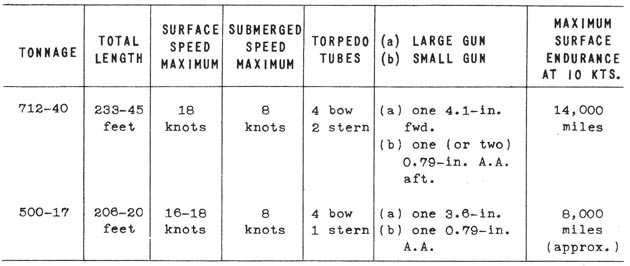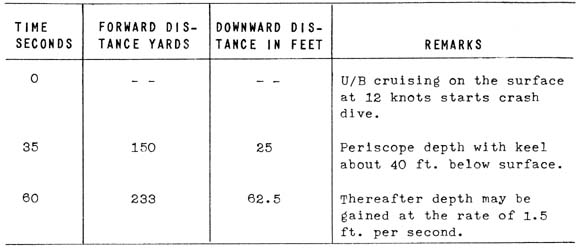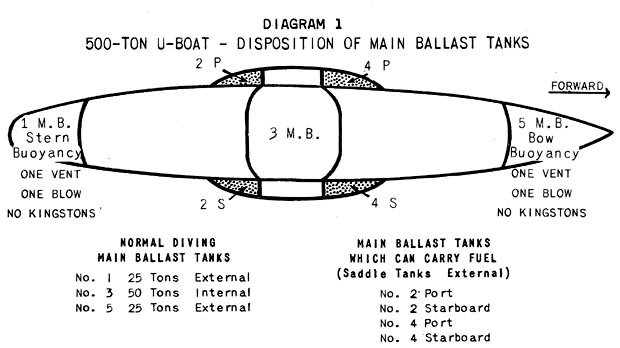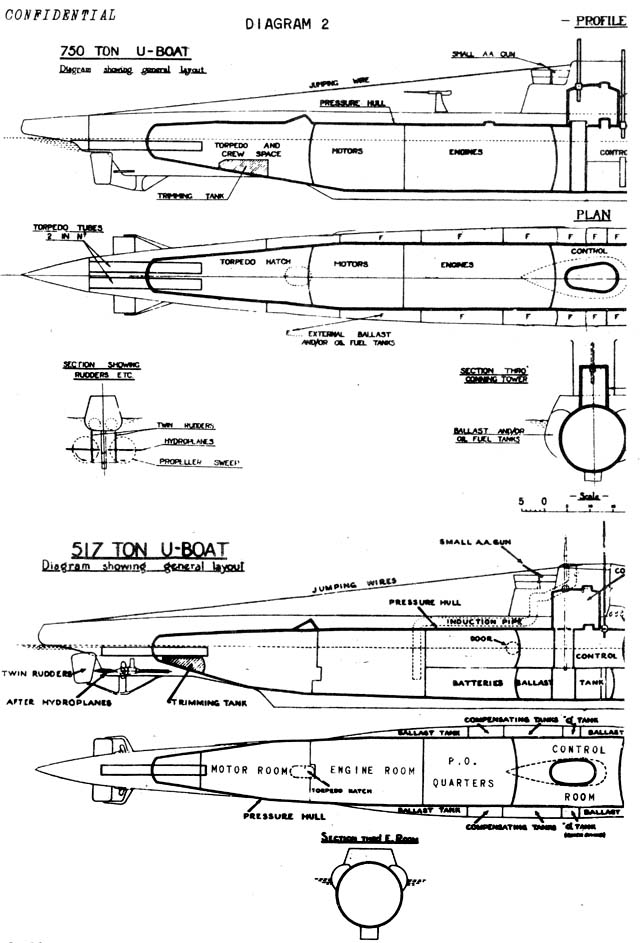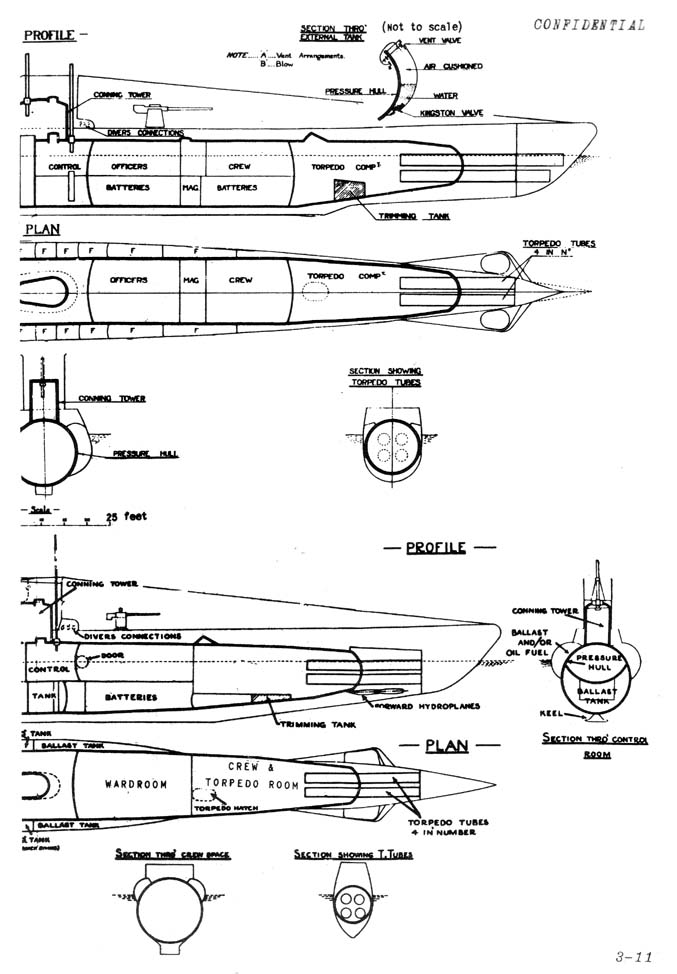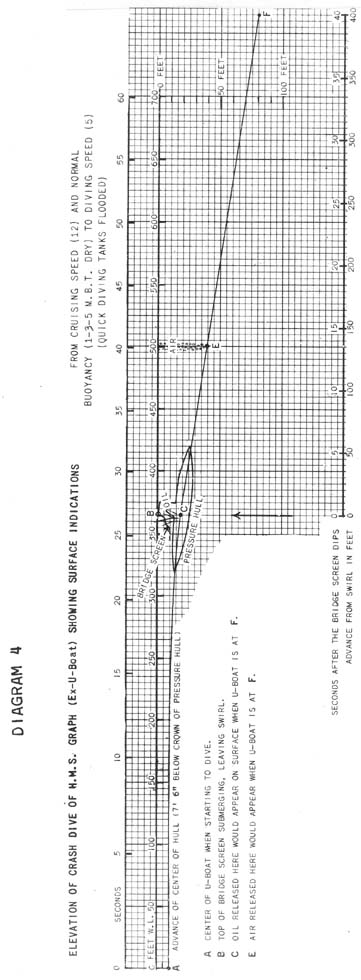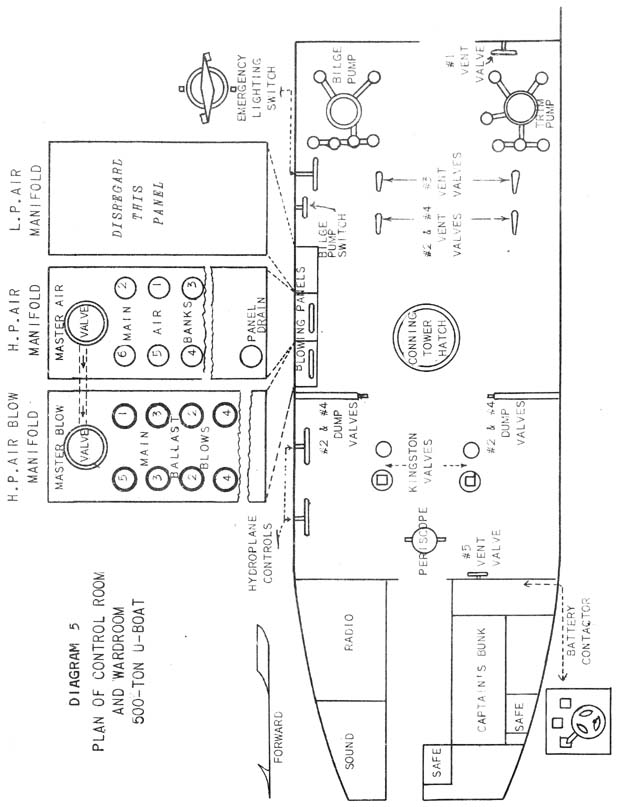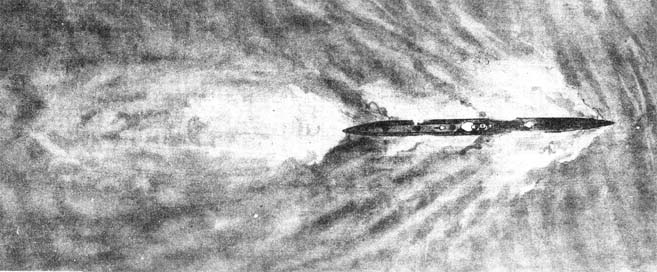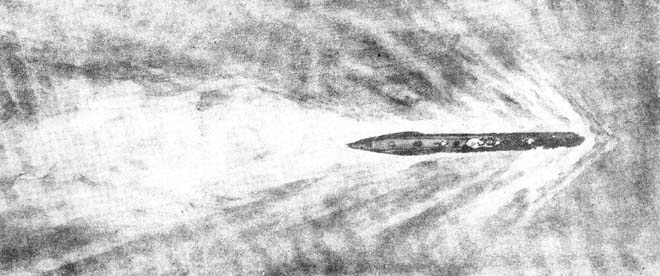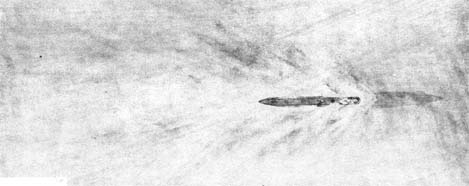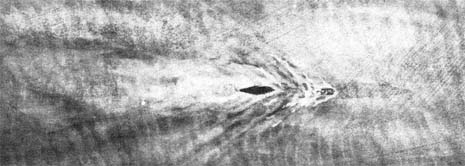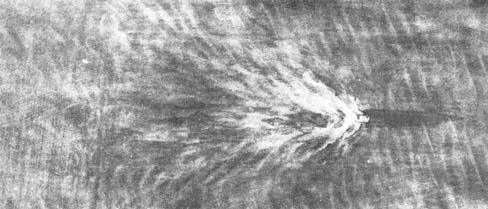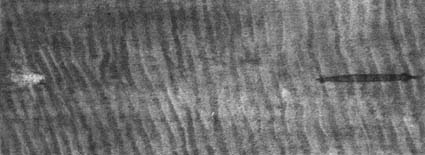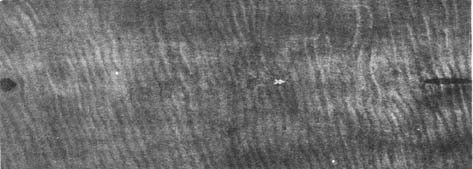|
CONFIDENTIAL
PART IV
JAPANESE SUBMARINES
Section 1
CHARACTERISTICS OF JAPANESE SUBMARINES
| 4101. |
Japanese submarines are divided into three (3) classes. In the first and largest class are the so-called "I" or fleet submarines, all of which have over a 1,000-ton displacement and which in general are constructed along similar lines to the late German U-boats of the first World War. Quite a few of this type are so constructed that they can carry either a midget submarine or an observation type aircraft. The second type consisting of the so-called "RO" or coastal type, are smaller submarines of less than 1,000 tons displacement of an earlier construction, slower speed and less cruising radius. These vessels, however, can easily operate in Hawaiian waters from their bases in the Mandate Islands, and have been contacted in the Aleutian Island Area, and in the Indian Ocean as far to the westward as Madagascar. The third type consisting of midget submarine is of two sub-types, the first of which is represented by those captured at Pearl Harbor, and the second by those captured at Sydney, Australia. |
Section 2
GENERAL OUTLINE
| 4201. |
The general outline of all submarines is very much the same. Details of silhouettes, dimensions, armament and engines are shown in ONI 14. The remarks pertaining to the German U-boats apply fairly closely to the Japanese submarines as well. |
Section 3
GENERAL ORGANIZATION OF JAPANESE SUBMARINE COMMAND
| 4301. |
At the time of writing the bulk of Japanese submarines are grouped under a single submarine command, the Sixth Fleet, the Headquarters of which is believed to be situated in the Marshall Islands. Besides this, there are about two squadrons each assigned to duty in the Fleet which defends the area which includes the Aleutian Islands, and in the Fleet assigned to the area which includes the Solomon Islands. |
| |
| 4302. |
Except for dispositions taken soon after the beginning of the war, most of the Japanese Submarine effort has been in reconnaissance and very little toward the destruction of merchantmen. |
4-1
|
